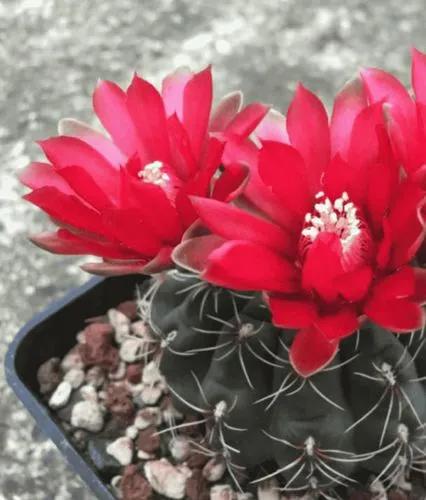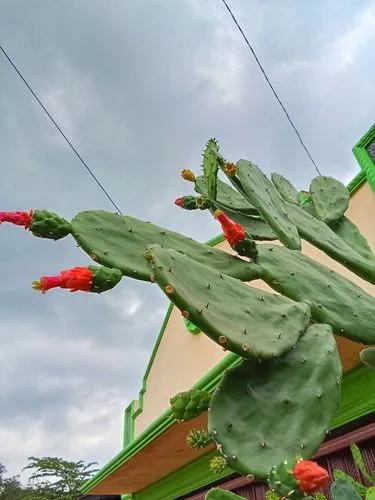With an often tree-like appearance, its cylindrical gray-green to blue stems can reach 10 metres (33 feet) in height and 10–20 cm in diameter as a self-supporting plant. However, if supported by a scaffold, C. repandus has grown to a height of 110 feet (34 meters) at the SDM College of Dental Sciences at Dharwad, Karnataka, India, technically making this the tallest cactus plant in the world, although no cactus under natural conditions exceeds eighty-two feet (25 meters) in height in the case of Cereus stenogonus.There are nine to ten rounded ribs that are up to 1 centimeter high. The small areoles on it are far apart. The gray, needle-like thorns are very variable. They are often numerous, but can also be missing entirely. The longest thorns are up to 5 centimeters long. The large, cream-colored, nocturnal flowers remain open for only one night and are of vital importance to pollinating bats. The fruits, known locally as pitaya, olala (only in some parts of Bolivia) or Peruvian apple, are thornless and vary in skin colour from violet-red to yellow. The edible flesh is white and contains small, edible, crunchy seeds. The flesh sweetens as the fruit opens out fully. As the cactus grows in arid regions and fruits in the dry seasons, the fruit is an essential source of food for birds in its native range
Cereus Repandus Care
Cereus Repandus



How to Care for the Plant

Water

Watering: During the active growth period water moderately, but allow the top centimetre (0.4 inch) or so of the mixture to dry out before watering again. During the winter rest period give Cereus peruvianus just enough water to prevent the mixture from drying out.

Pruning

Cut unwanted or damaged branches at the end of the growth section where a knob forms in the branch, or where the branch connects to another branch or main column. Use a knife for small cactuses, or a pruning saw for large cactuses. Do not use pruning shears; they can damage the cactus.

Fertilizer

At the beginning of the growth period apply a dressing of slow release fertiliser and stir it into the surface of the soil in the pot. Alternativelly , this fertiliser may be incorporated in potting mixture when repotting.

Sunlight

This plant is a perfect candidate indoor plant for a sunny south, east or west window. Light: Grow Cereus peruvianus cacti in the fullest possible sunlight. Since the light coming from a window is one-sided, a columnar plant will tend to lean in that direction and so it is most important to turn such plant frequently.

Soil

Suitable for: light (sandy) and medium (loamy) soils and prefers well-drained soil.

Temperature

Temperature: Tolerant to 20oF. Light: Full sun and NO shade.

Additional

This Cereus (Genus) cacti can produce white flowers within summer - that open up at night, once it matures and a prominent ribbed column stem, with brown colored spines, is displayed. Repandus has grown to a height of 110 feet (34 meters) at the SDM College of Dental Sciences at Dharwad, Karnataka, India, technically making this the tallest cactus plant in the world, although no cactus under natural conditions exceeds eighty-two feet (25 meters) in height in the case of Cereus stenogonus.

Popularity

2,361 people already have this plant 318 people have added this plant to their wishlists
Discover more plants with the list below
Popular articles






